#niigata city
Explore tagged Tumblr posts
Text

Former Saito family villa. Taken by Niigata City in June 2009.
334 notes
·
View notes
Text
新潟 TRIP 202403 – その陸:さんかくとまる
先月末の3月25日(月)~26日(火)にかけて、初めての新潟県へと出掛けてきました。 そもそも日本海側で訪れたことがあるのは京都府と福井県だけでもあったので、結構貴重なことでした。 今回は急遽の必要に終われた形で、特段の予定があったわけではないのですが、されど行かざるを得ないというか、行くことが確定していた話。 さりとて、初の新潟にウキウキしないわけはなく、意気揚々と『新潟 TRIP 202403』へ!! 2日目は、新潟を離れる日。 だからこそ、米を食べたかったのです。 『今世司酒造 株式会社』での酒蔵見学を終え、次に向かったのは『農家の息子がつくる食堂 さんかくとまる』。 『万代シティバスセンター』を中心に構成された一大商業地区『万代シティ』にある『万代シルバーホテル』2階に、『BANDAI FOOD…

View On WordPress
2 notes
·
View notes
Text
Top 7 Niigata City Museums You Should Visit *Activity Archive*
If you're interested in museums, Niigata City has a few different options. Some of them are related to aspects of Niigata, while others are just for fun. This is my list of the top 7 Niigata City museums.
7. Niigata Science Museum
The Niigata Science Museum has many interesting sections to show off all kinds of science in action. Even without being able to read Japanese, there are a lot of interactive displays that you can enjoy. There are sections on optical illusions, space, robotics, dinosaurs, and much more. They also have a planetarium and a section where they hold special exhibitions, like the Pokemon fossil one I went to see with friends. It’s also near a nice bakery, Saffron Meikei, so you can always grab some breakfast before heading over.

6. Niigata City Aquarium Marinepia
Right next to the ocean, the Niigata Aquarium, Marinepia, is full of ocean wildlife. You can see dolphin shows or walk around and check out the various animals inside. A small outdoor section showcases different plants and animals with some quiz questions too (though they are in Japanese). It’s not huge, but there’s still plenty to do, and it’s right across from a gelato store and an all-you-can-eat Indian curry restaurant.


5. Niigata Rice Cracker Kingdom
Niigata Rice Kingdom is a rice cracker museum about a 20-minute walk from Niizaki Station, though there are also closer bus stops. It isn’t very large, but it does have a small kitchen where you can cook your own rice cracker and paint it to make some parts darker. It can be a little difficult to find because the first thing you see is the back of one of the buildings, but you should be able to follow the arrows to the doors. They also have a small rice cracker store in Niigata station 2F East Side.


4. Northern Cultural Museum
The Northern Cultural Museum is the beautiful old house of a wealthy farming family. It’s got a Japanese-style garden and a few displays of old artifacts, as well as the Wisteria which blooms in late April and early May. However, it is difficult to get there. You either need a car, or you have to catch one of the few buses that drop off nearby, which don’t run late at night during the Wisteria light-up season because the museum isn’t usually open that late. However, there is a smaller version close to Furumachi that was an author’s home. While it’s not as big, it’s much easier to get to.


3. Shirone Kite Museum
Another museum that’s not further up the list because of the distance, the Shirone Kite Museum is still worth a visit, especially if you can go while the actual kite festival is taking place. The buses to the Shirone Kite Museum come and go about once an hour and during the festival, there are also free shuttle buses to important parts around Shirone. The museum itself displays kites like the ones used in the kite battles over the river, some small and some giant. There’s even a video hall where you can see the creation process, though as far as I could tell it’s all in Japanese, but the visuals are the most interesting part anyway.

2. Minatopia
Minatopia is the Niigata City History Museum located along the Shinano River. It’s a nice place to check out the history of Niigata and even includes some cool old buildings on the grounds. If you want to read more about it, check out my full article here: https://www.tumblr.com/redheadinjapan/720910514442633216/niigata-city-history-museum-minatopia-activity?source=share

1. Saito Villa
Saito Villa is very similar to the Northern Cultural Museum and is just around the corner from its city branch. It’s an old merchant’s house with beautiful Japanese architecture and gardens. It is a little smaller than the Northern Cultural Museum, but you can actually get tea or coffee and snacks while you sit and view the garden. Unfortunately, the Noto earthquake in January did damage part of the garden, but only a small section is currently roped off.


Museums can be a great way to spend a day, alone or with friends. You should definitely check out some of these great Niigata City museums if you have ever have some time to kill or are in the area.
1 note
·
View note
Text





Clouds Awakening ⛰️
I'm an autistic amateur photographer. Follow me on Tumblr and Instagram 📷
#dawn landscapes#sea of clouds#mountain sunrise#nature beauty#misty mountains#peaceful mornings#Ojiya City#Niigata scenery#cloud photography#tranquil views
3 notes
·
View notes
Photo
オンラインで稼ぎたいですか? あるいは、どのようなビジネスを行っていても、ビジネスを 3 倍の利益に変えたいと考えていますか? したがって、すぐに次のリンクをクリックして登録を完了してください:- https://rb.gy/ll8mb
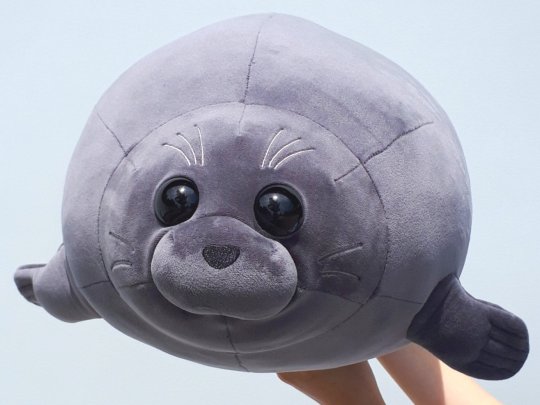
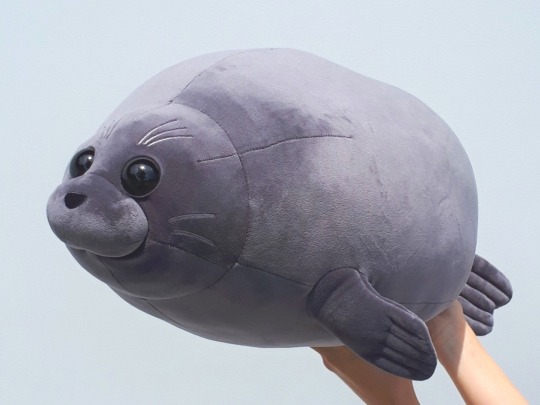
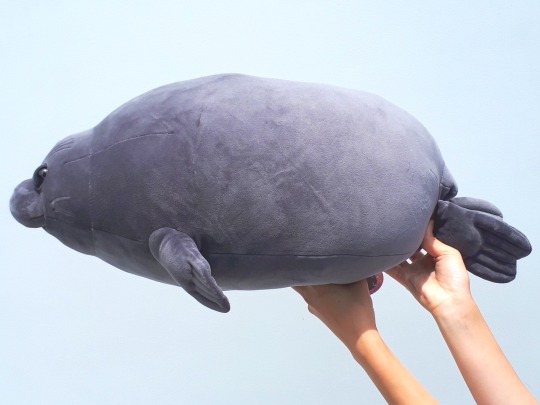

Niigata City Aquarium “Marine Pia Heart” - Baikal Seal
#plushblr#plushies#plushcore#soft toy#stuffies#plushie#marine pia heart#seal#niigata city aquarium#toycore#baikal seal#seals#plush: seal#marine mammals#plush
29K notes
·
View notes
Text

thats fair enough
#gemitus#had a horrible moment when i searched what ceras (as riimuda uses) means and it said CHERRY until i saw that was for cera#another one when i searched for seras and it said princess but that was for sera#it seems jp fandom have decided its Selas σέλας which is greek for light. also where the name selene (goddess of the moon) comes from. so u#lilienfeld austria is the sister city of jouetsu in niigata which borders nagano where kaho's from#yanagida was a village in ishikawa that was merged with some other towns to create noto which is where ruri's from#also lilienfeld of course means lily field. sasuga kaho
1 note
·
View note
Text
Niigata City Embroidered Hoodie

0 notes
Text

Young Rumiko Takahashi selfdrawing ,with her friends goofing off at Niigata Chuo High School. She's on the right taking Komawari's pose from Gaki Deka.
#高橋 留美子#Takahashi Rumiko#Niigata city Japan#新潟市#Niigata High School#Gaki Deka manga#がきデカ#Tatsuhiko Yamagami#Weekly Shōnen Champion
0 notes
Text
新潟県
Japanese Prefectures: Chūbu - Niigata
都道府県 (とどうふけん) - Prefectures of Japan
Learning the kanji and a little bit about each of Japan’s 47 prefectures!
Kanji・漢字
新 あたらしい、あらた、にい~、シン new
潟 かた、がら���lagoon
県 ケン prefecture
中部 ちゅうぶ Chūbu, Central Japan, the central region of Japan
Prefectural Capital (県庁所在地) : Niigata (新潟市)

Niigata Prefecture is famous for its high-quality rice, sake, spectacular fireworks displays in winter, skiing in winter, and hot springs year-round. Niigata lies along the Sea of Japan and includes the offshore islands of Sado and Awa. Silt deposited by the Shinano and Agano rivers has created the lowlying Echigo Plain in the central part of the coastline, where the majority of the prefecture's population live. Most of the cities are along the coast as the rest of the prefecture is mountainous.
Recommended Tourist Spot・おすすめ観光スポット The Katakai Fireworks Festival - 片貝まつり

Katakai Fireworks Festival (source)
The Katakai Fireworks Festival is an annual autumn celebration at Asahara Shrine. Fireworks serve as dedications to the shrine, with individuals and companies expressing their sentiments by contributions to the display. The display contains the "yonshakudama" firework, the world's largest firework with an 800-meter diameter, and is listed in the Guinness Book of World Records.
In the morning, the town of Katakai is full of traditional events like the dedication of firework balls to Asahara Shrine, and rituals praying for the success and safety of the upcoming display.
Other fireworks festivities include the Gion Kashiwazaki Festival Sea Fireworks (July 26th) which illuminates the night sky over the sea; the Nagaoka Festival Grand Fireworks Show (August 2nd & 3rd) which unfolds along the banks of the Shinano River; and the winter display of Echigotsumari Fireworks in the snow (Late February) where fireworks color ethereal flower fields of light on snowy plains.
Regional Cuisine - 郷土料理 Hegi-soba (Buckwheat noodles) - へぎそば

Hegi-soba (source)
Soba is usually made with soba flour and wheat; however, this Niigata style soba is made by mixing a type of seaweed called funori with the seaweed. Soba originated in the Edo period, and in Niigata soba was made in an area called Uonuma. Uonuma didn't grow wheat, and so often local vegetables like ground burdock root were added to the soba flour to make noodles instead. In addition to soba, Uonuma was famous for its beautiful textiles, and when weaving the cloth, funori would be ground up and applied to the weft to stiffen the fibers and make the process easier. Someone must have come up with the idea to add funori to soba flour one day, and hegi-soba was invented.
Like zaru-soba, hegi-soba gets its name from the rectangular serving tray in which it is served. The verb hagu means to strip or peel, and in many dialects of the Kanto region it is pronounced hegu. The trays made from planed wood were called hegi. Thus the soba, wound by hand into bite-sized portions and layered on the tray, is called hegi-soba.
The funori makes the noodles a little more slippery than regular soba noodles but the taste doesn't differ much. The best way to enjoy hegi-soba is to dip the noodles into the dipping sauce, or mentsuyu, to get a base flavor. Then, try it with some hot Chinese mustard: Spread a little mustard on the soba, then dip the soba into the mentsuyu without letting the mustard and mentsuyu mix. Next, add sliced green onions to the mentsuyu and dip in your noodles. Finally, add some ground sesame seeds to the mentsuyu and try out that taste.
Hegi-soba is the pride of Niigata, such that you can get a special Soba Ticket in the city of Tokamachi, which gives you two 500-yen vouchers for soba, usable at 14 different restaurants in the city.
Niigata Dialect・Niigata-ben・新潟弁
Niigata-ben has three different classifications - two on the mainland (Tōkai-Tōsan dialect and Tōhoku dialect) and one on Sado Island (Sado dialect).
あちこたねぇ achi kota nee
Standard Japanese: たいしたことない、大丈夫、心配ない (taishita koto nai, daijyoubu, shinpai nai) English: trivial, not amounting to much, it's okay, don't worry about it
あちこたねぇよ、きっと大丈夫だから achi kota nee yo, kitto daijyoubu dakara
心配ないよ、きっと大丈夫だから shinpai nai yo, kitto daijyoubu dakara
Don't worry, it's going to be okay
2. かんべんね kanben ne
Standard Japanese: ごめんね (gomen ne) English: I'm sorry
あー!かんべんね。忘れちゃった。 aa! kanben ne. wasurechatta.
あー!ごめんね。忘れちゃった。 aa! gomen ne. wasurechatta.
Ah! I'm sorry. I forgot.
3. ごおぎ (gougi)
Standard Japanese: 大変、ものすごく (taihen, monosugoku) English: immense, greatly
これはごおぎ難しいね kore wa gougi muzukashii ne
これは���のすごく難しいね kore wa monosugoku muzukashii ne
This is very difficult, isn't it
4. なじらね (najirane)
Standard Japanese: いかがですか、調子はどうですか (ikaga desu ka, choushi wa dou desuka) English: how are you, how are things
A: 今日はなじらね? kyou wa najirane? B: ばっかいいて~ bakka ii te~
A: 今日は調子どう? kyou wa choushi dou? B: すごくいいよ~ sugoku ii yo~
A: How are you doing today? B: Really good~
5. そいがー (soi gaa)
Standard Japanese: そうなんだ (sou nan da) English: oh really, oh I see
A: この前ぽんしゅ館に行ってきたて~ Kono mae Ponshukan ni itte kita te~ B: そいが? Soiga?
A: この前ぽんしゅ館に行ってきたんだよ Kono mae Ponshukan ni itte kitanda yo B: そうなの? Sou na no?
A: The other day I went to Ponshukan* B: Oh really?
*Note: Ponshukan shops are located inside three major JR stations in Niigata, this sake "theme park" where you can sample leading local sake brands, purchase sake-related goods, and even soak in a sake hot spring bath.
More Niigata dialect here (JP).
#japanese prefectures#日本語#japanese#japanese language#japanese langblr#langblr#studyblr#都道府県#新潟県#niigata
111 notes
·
View notes
Text

New Japanese cryptid information has been received.
Sometime between 2014 and 2015, a two-meter dorsal fin, similar to that of a killer whale, was spotted protruding from the water in Kaji River (also spelled Kajikawa river), which flows through Niigata Prefecture's Shinbata City. Since the sighting location is 7 kilometers from the ocean and the water is shallow, it is unlikely that killer whales or other animals entered the river. The shallow depth of the water precluded the presence of tall creatures, so the witness imagined an eel-like creature with the dorsal fins of a killer whale.
This cryptid was named Kajipogo after Kaji River and Ogopogo.
54 notes
·
View notes
Text
Haruka’s victim of his “murder” was he himself (The suicide theory)
This is a theory that I had since t1 there have been even more points for me to work with (I just never had time/peace of mind to do so), so let’s get into it, shall we?
First of all, as should be obvious from the title, there is a cw for suicide and also one for child abuse and neglect, as well as dead animals because we can’t talk about Haruka without going into these topics.
So what we are going to talk about today is:
Haruka’s victim of his “murder” was he himself
You might wonder now: But how is he walking around in Milgram then? We are looking at a magical song prison that bends the fabric of reality, I don’t think being a sort of purgatory is that much out of the question. I am not one to think that ALL of our current prisoners are dead, but for some it seems like an option. Note Yuno asking so pointedly in her t2 VD “Am I really still alive?” which seemed like a big hint. And also (MILGRAM NOVEL 2 SPOILER) in the second novel there is a part where literally falls the statement of “of course there are people who are already dead, it would be more strange if we wouldn’t have these”. As well as there being a suicide case.
And even if we would not go into that direction, we would still have the option of a failed suicide attempt which resulted in a temporary stopped heart = on paper you can be declared dead. With Milgram’s very loose definition of “being responsible for the loss of a human life” this seems very much like it could qualify as well.
So what gave me the idea that this could be the case for Haruka? The first thing that made my interest perk up was this screen here from Undercover:

In these shots with the silhouettes from the prisoners we presumably have a location where their murder happened or is heavily connected to it. And in some cases we even have the victims present in the shots.
What differentiates the prisoners from their victims is that all prisoner silhouettes have this gray hatching on them while their victims are a solid black color (it’s a bit unclear with Kazui, because he and Hinako are pretty small in his scene).
So with that in mind what falls to attention in Haruka’s shot? Yes, he is a solid black.
And that sprung the idea of: what if Haruka is the victim?
Well, he is, in more sense than one, but we are only concentrating on his “murder” for now.
Let’s now go through his first MV Weakness with this in mind, because it is already ripe with a lot of possible suicidal imagery. We won’t go over his first VD, because … well, there are simply no real hints in that one yet.
Weakness analysis
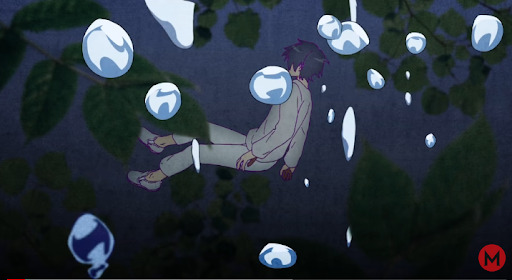
Right away at 0:08 we start with a scene transition of Haruka sinking into water. As you are probably all aware water is a big recurring theme with him, it draws itself through his MVs as well as being present in image material and merchandise related to him. Prior to ending up in Milgram he was also living in the city Niigata, which is literally called “the city of water”. So we can assume that it is of pretty big significance to his character.
The overall imagery of drowning and suffocating also appears repeatedly with him, so my assumptions of how he might have taken his life are either by, well, drowning or by hanging himself (due to imagery we will later get to in AKAA).
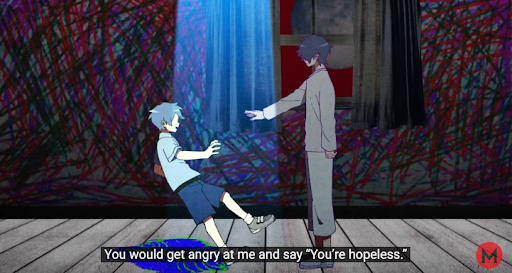
At 0:41 we have Haruka pushing his younger self into a “scribble-puddle”, leading us to another transition of Haruka once again sinking into the watery depths.

I think this is both a representation of Haruka’s loathing and jealousy of his younger self which still was somewhat loved by his mother until his disabilities became too noticeable to be ignored as well as an actual stand-in for killing yourself.
At this point let’s talk a little bit about the little girl that is assumed to be Haruka’s victim, shall we?
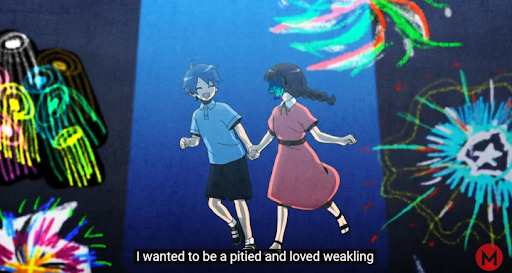
Well, in a broad sense we can say: yes, she is his victim. But the twist is this, recently I saw a theory that made a big amount of sense to me, especially taken in account with the suicide theory. Basically, I think the little girl never existed in reality. She was just a figment of Haruka's imagination, a sort of “Imaginary friend”, his idealized version of what “Haruka” should have been. We know from his t2 interrogation questions that his mother always wanted a girl instead of a boy, going so far as to picking the name beforehand and not changing it even after she knew she was expecting a boy.
I could even imagine that his mother might have tried to raise him as a girl up to a certain age, her terrible overall parenting surely gives me the impression that she would do something that twisted.
So Haruka’s delusion of “his perfect loveable self” might have intermingled with himself taking his life. Because something that always threw me off was that in the end of AKAA when we get the split second of him strangling the girl it is clearly a grown up Haruka putting his hands on her neck. But in Weakness they are around the same age apparently. Why is this? Well, of course the “perfect little girl his mother wanted” would stay a little girl forever in his mind.
So he is fully convinced that he killed that girl, in his mind she was real after all.
This might be completely off the mark, but even if it is, I still could imagine Haruka taking his life after having committed the murder of the girl. Going over his second VD again personally I am leaning more towards the option that the girl was his little sister, with how much attention he puts on it having been a murder out of jealousy.
But the lyrics going along with him pushing the girl in Weakness could also allude to the possibility of that “imaginary girl” theory.
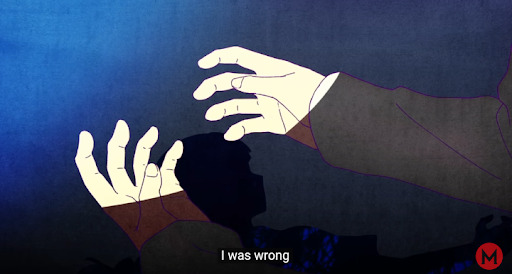
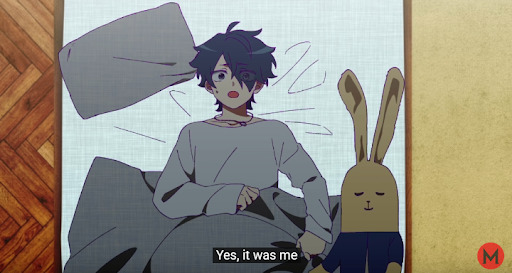
And right here at 1:20 down in the water we go again, directly after the scene above.

And at 2:05 we are at the well known stone smashing scene. The action in the screen is not the main point in this case though, here we have the first appearance of the lyrics of:

Haruka usually doesn’t consider the abuse received by his mother as bad, any attention received from her is good attention in his eyes, so he wouldn’t see himself as a victim for that, right?
So what could it imply?
Maybe becoming your own victim?
Because a lot more importantly, these lyrics make another reappearance right away. When?
When Haruka strangles his younger self. (Right after another “falling in water” scene at that.)

And at the end we literally have Haruka kneeling over his dead self, admitting that “it was me”.


It is also important to note that this is the only instance in the MV where he is not waking up in his bed again.
So that is all already plenty to go from, isn’t it? But don’t worry, there will be plenty more. (Or do worry, my heart cries daily for poor Haruka.)
To go chronologically let us look at his second VD:
Metamorphosis of the Weak
This will be quick, we only have to take a look at the very end here where Haruka comes up with his suicide threat. It’s his first instinct after threatening to kill Es and becoming aware again that he can’t do that. He is making that statement with astounding ease, almost as if … he went through with it before. He knows he is capable of doing it, so he is certain and confident of himself.
On that note, I am like 99,9% certain that he won’t be successful with whatever attempt he might be starting, there will be an intervention or a reason why it’s not possible of some sort. It will most likely go against Milgram’s purpose of judging these prisoners, so it won’t be allowed that somebody escapes proper judgment by putting an end to themselves. (MILGRAM NOVEL 2 SPOILERS: Jackalope in the novel also makes a point of this, saying that the prisoners there are disposable only after they have been judged.)
But I wrote a whole post about all the reason I am certain they won't kill him off in the middle of the trials, if you want feel free to read up on that as well!
So without further ado let us go to Haruka’s second MV:
All knowing and all Agony analysis
We start at 0:12 with Haruka in his solitary confinement, the room getting flooded with water.
Here we are again with the theme of him getting submerged in water.
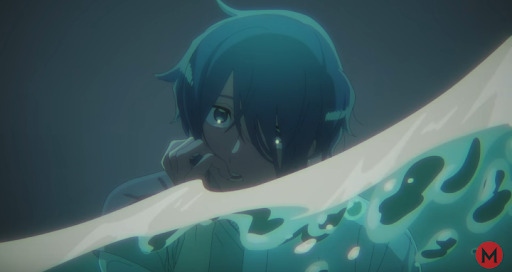
And the next scene of him submerged in water right here at 0:35 in the mirror (btw. I love the direction of this MV, the blurred writing appearing in the mirror like it is getting drifted ashore by the water being one of the parts of this).

Now here at 1:29 we have a very interesting scene.
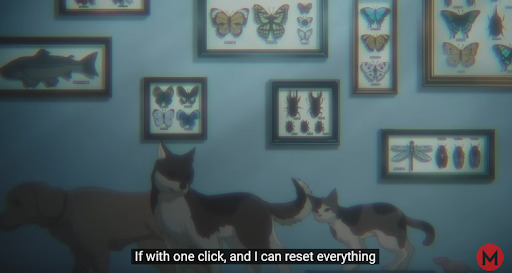
Sadly AKAA is riddled with a very spotty translation of the lyrics that doesn’t convey the meaning a lot of times or even leaves out some things.
This part here is the perfect example, the more fitting translation here would be: “if with the push of one button I could be reborn”
The translation exchanges the reborn with reset which doesn’t really carry the same meaning in this context, being reborn is something that you get after dying. I don’t think this is a coincidence at all. Also important detail here is that we have the frames with the butterfly specimens on the wall. The butterfly is a symbol of death and rebirth as well. This goes well with the name of Haruka’s second VD, because “metamorphosis” is the term for the transformation that a butterfly undergoes in the cocoon.
And here another important part that gets lost in translation:
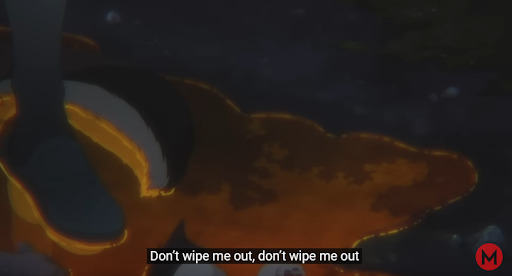
In Japanese it would more correctly translate to “I don't want to die, I don’t want to die”.
Because, yes, I do think that Haruka committed suicide. Do I think that he did it because he wanted to die? No, that was not the main objective for him. In my opinion it was either, like before mentioned, to be reborn so that he can be a more loveable self in the next life or it was the last final desperate cry for attention from his mother after even killing the target of his jealousy didn't give the desired results.
It probably also ties in with his situation in Milgram, he does not want to die, to get wiped out, but his death is once again the only means to an end that he can see in this situation, in this case forcing an innocent vote for Muu with his life as the bargaining chip. (And well, we all know how well that gamble turned out for him ...)
And then at 2:09 we have the scene of Haruka standing on the chair.

You know what people often stand on chairs for? Hanging themselves. Doesn’t help that the barred up window in the back sort of alludes to the rope of a noose the way one of the bars is placed directly behind of him.
And here once more, with the infamous “dreaMu” line.
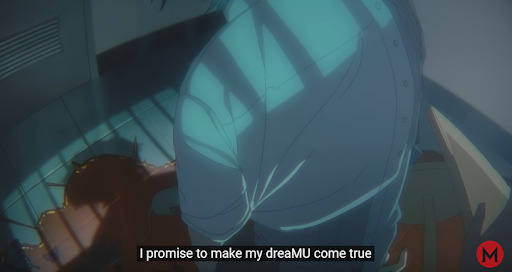
As I mentioned before, I suspect his pre-Milgram suicide was by drowning, but these images could very well allude to his threat spoken in the prison to secure Muu’s innocent vote. I personally wonder how Haruka could even be aware of this option to take his own life, because I can hardly imagine him having knowledge about this with his “sheltered” lifestyle, but who knows.
Good luck attempting that in the prison though, as far as I am aware there are no fixtures there that would allow for it, and we are talking about a person that can’t even tie his own shoes, let alone tie a noose that would hold up his whole body weight.
Here we also have another very bad translation choice, and I’m not talking about the “dreaMu”. No, the problem is that they just didn’t include the whole second part of that line which would be “and spread my wings wide”, perfectly going along with Haruka spreading his arms like wings.
As if to take flight. This could be calling back to the butterfly symbolism as well as jumping, “taking flight”, from the chair …
And at 3:00 we reach another part of the MV where Haruka gets submerged in fluid. But this time it’s not water.

We have seen this fluid before in the MV, notably when the preserved animals started “melting”.
Preservation is the important word here, because this fluid is most likely formaldehyde (or formalin), used to preserve dead bodies. Fun fact, this is technically not the first time we see it, it might be present in Weakness as well.
This bottle here right at the beginning looks a lot like bottles that get used to store it. It is also a clear fluid before it comes into contact with what gets preserved.

As to why Haruka has knowledge about this sort of thing is, that I could imagine that his mother had to do with animal specimen preservation, either as a hobby or for work, so he is familiar with the function of it. On that note, he might even have started killing animals to bring his mother more bodies for her hobby/work and to be praised for it.
So we are closing the MV with Haruka sitting and swaying in his “formaldehyde tank”, the very substance in which dead things are preserved, repeating the lines of wanting to be reborn to be the favorite next time, in his next life basically.
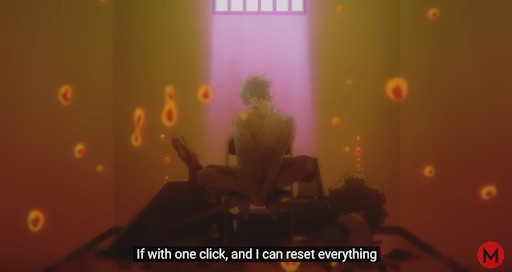

(Oh my sweet boy, you don’t have to try so hard, you are already my favorite.)
And this is it, my theory that Haruka is literally a dead boy walking in this prison.
My heart bleeds for him, because for him it’s absolutely impossible to get any sort of happy end at the finale of Milgram and I think he would have deserved the world. Just a family that would have supported and understood him properly, a way more normal life, how his biggest wish is.
#milgram#haruka sakurai#sakurai haruka#milgram theory#Moi rambles on for hours#I am rotating Haruka in my head daily
160 notes
·
View notes
Text

Image of the former Saito family villa provided by Niigata City Open Data.
新潟市オープンデータで提供されている旧齋藤家別邸の画像。
53 notes
·
View notes
Text
新潟 TRIP 202403 – その伍:今世司酒造
先月末の3月25日(月)~26日(火)にかけて、初めての新潟県へと出掛けてきました。 そもそも日本海側で訪れたことがあるのは京都府と福井県だけでもあったので、結構貴重なことでした。 今回は急遽の必要に終われた形で、特段の予定があったわけではないのですが、されど行かざるを得ないというか、行くことが確定していた話。 さりとて、初の新潟にウキウキしないわけはなく、意気揚々と『新潟 TRIP 202403』へ!! 2日目は、雨模様でもあったので、初日からずらした酒蔵見学をし、後はご当地ものを食べて帰ろうじゃないかと、あっさりとした計画でした。 ホテルの朝食を食べ、ややゆっくりとチェックアウトを済ませ、向かった先は『今世司酒造…

View On WordPress
0 notes
Text
The Best Foreign Restaurants in Niigata City
With the opening of the final new section of Niigata station last week, we now have several more foreign restaurants to add to Niigata's growing list. Even though it sometimes feels like the only foreign restaurants are basic American chains like McDonald's and Domino's, that’s certainly not true. So, let’s talk about some of the best harder-to-find foreign restaurants in Niigata City.
Burgers
Burgers are generally not too hard to find in Japan in the form of McDonald's and Burger King. However, finding good non-chain burger restaurants can be tricky. Leather Tramp Kitchen has good big burgers for around 1500 yen, as well as some other sandwiches and even milkshakes and fries. It’s run by a really nice guy, whose brother also owns a donut shop near Furumachi called Howdy Donut.

Mexican Food
On the other hand, Mexican food isn't always easy to find in Japan. However, Niigata City does have at least one good Mexican restaurant. El Mirasol is the best Mexican restaurant in Niigata City. They have everything from burritos to tacos to hot chocolate, and the owner is a very sweet lady who speaks a little English and will actually make the food spicy if you want.


English Pubs
One of the new restaurants at Niigata station is the English Pub-style restaurant called HUB Echigo Beer Pub. A collaboration between HUB English-style Pubs and Niigata’s Echigo Beer, it has a great atmosphere, good food, and lots of cool mixed drinks (including some non-alcoholic). You can grab some classic English favorites with a nice Echigo Beer or share one of the Liter Tower drinks with some friends.

Another good English Pub-style restaurant is The Liffey Tavern. There are actually three Liffey’s in Niigata City (two by Niigata Station, one near Furumachi) and one in Nagaoka. They also serve English favorites like Fish & Chips and Shepherd's Pie along with drinks like Guinness beer and Bailey’s Irish Cream.

Indian Curry
One of my favorite foreign foods in Japan is Indian curry. There’s just something nice about a good bowl of curry and a piece of naan bigger than my head that is very satisfying. One excellent Indian curry restaurant in Niigata City is Parbati Restaurant & Bar, sometimes affectionately referred to as The Orange Curry Place for its bright orange building. You can get a curry set with naan, rice, a salad, and a drink for around just 1500 yen.

Another good Indian curry restaurant is Star Curry in Furumachi. They offer similar curry sets for a good price and a wide variety of other foods. And if you’re over by the Niigata Aquarium, there’s a buffet-style curry place that’s only about 2000 yen.
Vietnamese Pho
Pho Minh is another new restaurant in Niigata station that serves Vietnamese pho. Their main dishes are different types of beef pho, but there are also several side dishes and drinks. You can even get a beef pho, side dish, and drink as a set for 1550 yen. The flat noodles are thicker and wider than I’m used to at American pho restaurants, but it was still pretty good and the lotus tea I got with it was also nice.

Thai Food
Sengdee Thai Beer Station is Niigata station's new Thai food restaurant. It opened in April with the other restaurants in 2F East Niigata Bar-Ramen Yokocho, and it serves both a good variety of Thai food and also Thai beers.

Korean Food
Korean food isn’t exactly hard to find in Japan but if you’re in Niigata City, you should try Kangeki. Right next to Niigata station, they have a wide variety of Korean foods including Chijimi and Tteokbokki. Many of their foods can also be pretty spicy if that’s something you miss when eating a lot of Japanese cuisine. Just don’t buy their Soju since they sell the same bottles at convenience stores for half the price.

You can also get good Korean gimbap at Gangnam Gimbap in Niigata Station as well as a variety of Korean side dishes.

Even though it’s harder to find certain foreign foods in Japan, you can still find some really great foreign restaurants. As much as I love Japanese food, sometimes you just need to break it up with something different. Any of these foreign restaurants in Niigata City are sure to give you exactly that, or you can go by the international store Jupiter and make something yourself.
#niigata city#foreign restaurants#foreign food#enjoyniigata#ourniigata#edgeofniigata#niigata#foreign restaurants in niigata city
0 notes
Text
Bonus Poll








The current flag of Fukuoka, Fukuoka Prefecture, Kyūshū, Japan vs The current flag of Fukuchiyama, Kyoto Prefecture, Kansai, Japan vs The current flag of Kōfu, Yamanashi Prefecture, Chūbu, Japan vs The current flag of Kyoto, Kansai, Japan vs The current flag of Nagaoka, Niigata Prefecture, Chūbu, Japan vs The current flag of Nonoichi, Ishikawa Prefecture, Chūbu, Japan vs The current flag of Tokyo, Kantō, Japan vs The current flag of Urakawa, Hidaka Subprefecture, Hokkaido, Japan
#cft bonus polls#eyestrain#eyestrain: color#eyestrain: contrast#flag: Fukuoka - Fukuoka Prefecture - Kyūshū - Japan#flag: Fukuchiyama - Kyoto Prefecture - Kansai - Japan#flag: Kōfu - Yamanashi Prefecture - Chūbu - Japan#flag: Kyoto - Kansai - Japan#flag: Nagaoka - Niigata Prefecture - Chūbu - Japan#flag: Nonoichi - Ishikawa Prefecture - Chūbu - Japan#flag: Tokyo - Kantō - Japan#flag: Urakawa - Hidaka Subprefecture - Hokkaido - Japan#we've got a chunk of these so i thought it could be interesting
27 notes
·
View notes
Text
Who is your most favorite of these"niche japanese plushie" below:
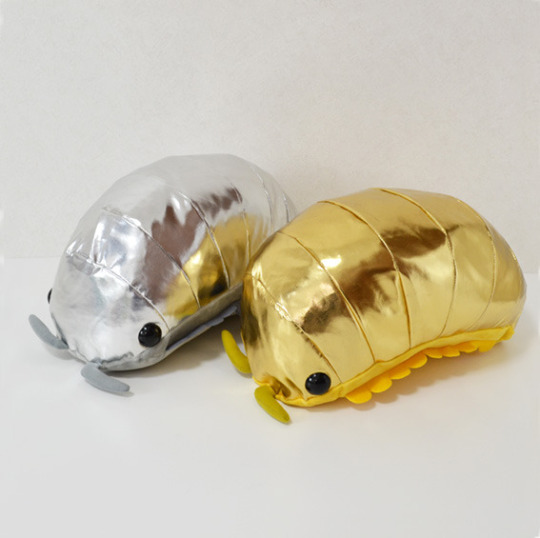
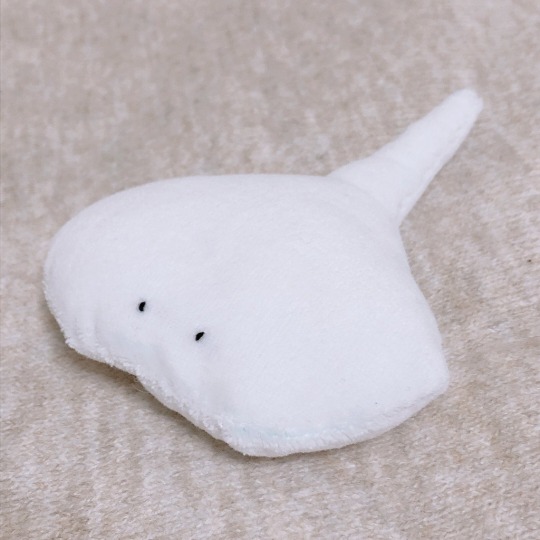


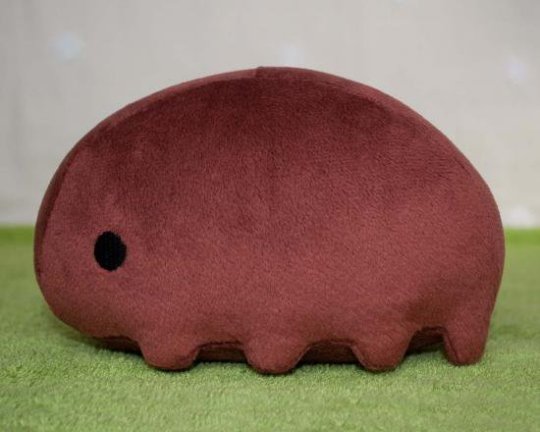

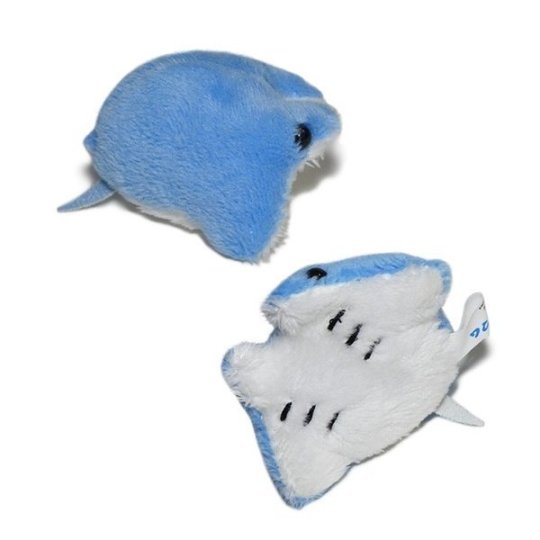

4K notes
·
View notes